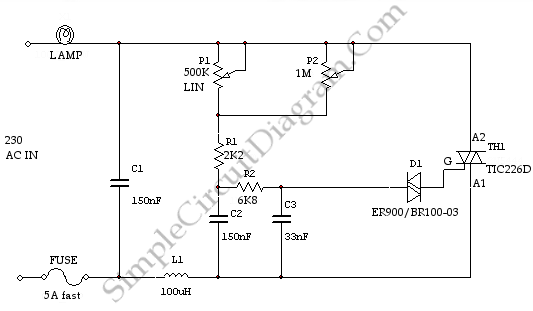
Low Cost Automatic LED Emergency Light

This is a low-cost circuit diagram for an emergency light utilizing a white LED. Components include an LM317 IC, a resistor, a transformer, an LED, and a variable resistor.
The emergency light circuit using a white LED is designed for efficiency and cost-effectiveness. The core component, the LM317 integrated circuit, serves as a voltage regulator that ensures the LED receives a stable voltage for optimal performance. The circuit typically operates from a transformer that converts the mains voltage to a lower AC voltage, which is then rectified to DC using a diode bridge.
The LM317 requires a minimum input-output voltage difference to function correctly, making it suitable for applications where the input voltage can vary. The output voltage can be adjusted using a variable resistor (potentiometer) connected to the adjustment pin of the LM317, allowing for fine-tuning of the LED brightness.
The resistor in the circuit is essential for current limiting, preventing the LED from drawing excessive current that could lead to overheating and failure. The value of the resistor is chosen based on the LED specifications and the desired current flow.
In summary, this low-cost emergency light circuit is efficient, utilizing commonly available components to provide reliable illumination during power outages or emergencies. The design emphasizes simplicity and functionality, making it an excellent choice for DIY enthusiasts and practical applications.This is a low cost circuit diagram for the emergency light based on white LED. Component: LM317 IC, Resistor, Transformer, LED, Variable .. 🔗 External reference
The emergency light circuit using a white LED is designed for efficiency and cost-effectiveness. The core component, the LM317 integrated circuit, serves as a voltage regulator that ensures the LED receives a stable voltage for optimal performance. The circuit typically operates from a transformer that converts the mains voltage to a lower AC voltage, which is then rectified to DC using a diode bridge.
The LM317 requires a minimum input-output voltage difference to function correctly, making it suitable for applications where the input voltage can vary. The output voltage can be adjusted using a variable resistor (potentiometer) connected to the adjustment pin of the LM317, allowing for fine-tuning of the LED brightness.
The resistor in the circuit is essential for current limiting, preventing the LED from drawing excessive current that could lead to overheating and failure. The value of the resistor is chosen based on the LED specifications and the desired current flow.
In summary, this low-cost emergency light circuit is efficient, utilizing commonly available components to provide reliable illumination during power outages or emergencies. The design emphasizes simplicity and functionality, making it an excellent choice for DIY enthusiasts and practical applications.This is a low cost circuit diagram for the emergency light based on white LED. Component: LM317 IC, Resistor, Transformer, LED, Variable .. 🔗 External reference





